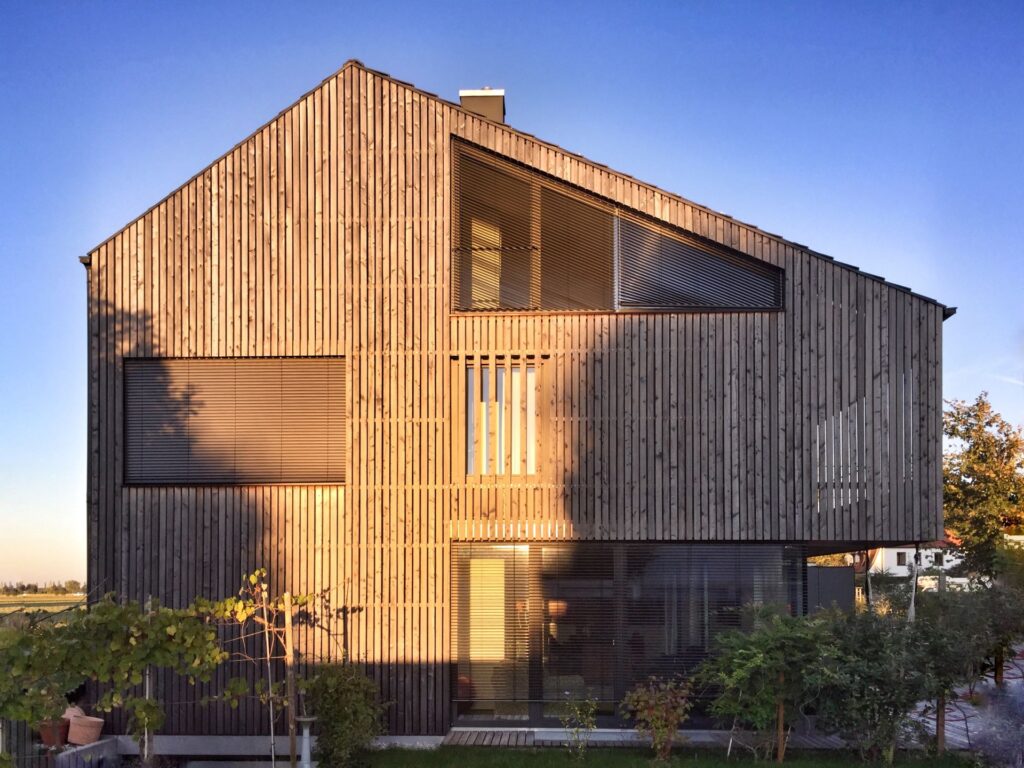As paradoxical as it may seem, destruction can indeed be the genesis of creation. The concept of transforming timber into a thing of beauty using the destructive power of fire might seem a tad unconventional, yet the results are striking. This blog post lights up the intriguing world of charring wood, a unique technique that has brought about a revolution in the aesthetics of timber. Does the thought of blending the raw essence of fire with the earthy simplicity of wood to create an architectural masterpiece pique your curiosity? Well, let’s ignite that spark!
Smoldering Silhouettes: The Art of Charring Wood
In the frenzied race towards futuristic construction materials and techniques, we often overlook the timeless charm of natural elements. Wood, with its rich textures and warmth, has been a beloved material for builders and designers for millennia. However, its vulnerability to elements such as insects, weather, and fire is a recurring concern. Enter the ancient technique of charring wood or “Shou Sugi Ban”, a process that not only resolves these problems but also elevates wood to a new aesthetic high.
Charred Wood Siding: The Phoenix of Timber
Charred wood siding is the outcome of this artistic process of controlled burning. Like a phoenix rising from its ashes, the wood emerges from the fire, stronger, more durable, and with an aesthetic appeal that is captivating. So how does this process work? Here are the basics:
- Charring: The surface of the wood is carefully charred using a controlled flame, creating a layer of carbon.
- Cooling: Post charring, the wood is left to cool naturally, solidifying the charred layer.
- Cleaning: The charred surface is then brushed off, revealing a textured, darkened surface beneath.
- Sealing: Finally, a layer of natural oil is applied, which not only seals and protects the wood but also enhances its visual appeal.
The Alchemical Transformation: Benefits Beyond Beauty
Apart from the stunning aesthetics, charred wood siding offers several other benefits, making it a winning choice for both interior and exterior applications:
- Durability: The charring process improves the wood’s resistance to insects, rot, and even fire.
- Maintenance: Charred wood requires significantly less maintenance than untreated wood.
- Sustainability: This technique utilizes no harmful chemicals, making it an eco-friendly choice.
The alchemy of fire and timber results in a product that is not just beautiful but also robust and sustainable.
Conclusion: Embracing the Burnt Beauty
In our exploration of aesthetics, let’s not shy away from the unconventional, from techniques that might seem destructive at first glance. The transformation of timber through fire into charred wood siding, a durable and visually striking material, is a testament to the alchemical potential of this approach.
We’re witnessing a resurgence of ancient wisdom in modern design, and the art of charring wood is a compelling part of this narrative. It’s a practice that beautifully demonstrates how we can create sustainable, low-maintenance, and aesthetically pleasing materials by harnessing and respecting the transformative power of natural elements. Aesthetic alchemy, indeed!
In the end, it’s about striking the right balance between preserving the essence of natural materials while enhancing their properties for modern use. So, next time you look at a beautifully charred piece of wood, remember the fiery journey it has been through. Let’s continue to explore, innovate, and cherish the alchemy of aesthetics that design offers. Burnt is indeed beautiful!
Picture Credits:
ah_fotobox – stock.adobe.com

